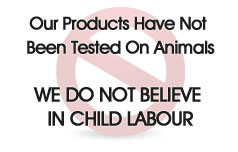 Email :
Email :
enquiry@dehlvi.com
![]() Toll free :
Toll free :
011-42141431
Search for Dealer locator or Dehlvi Approved clinics
 Email :
Email :
enquiry@dehlvi.com
![]() Toll free :
Toll free :
011-42141431
Search for Dealer locator or Dehlvi Approved clinics

Search for Diseases :
Description
Sustained rise in the pressure of blood flowing through the arteries above the normal; also known as high blood pressure. There are two types: essential hypertension and malignant hypertension.
Persons most commonly affected: Essential hypertension -- adults aged over 40 years, especially males, most commonly occurring or between 50 and 60 years. Malignant hypertension -- younger adults of both sexes.
Organ or part of body involved: Heart, blood vessels (arteries), and kidneys.
Symptoms and indications: Both forms of hypertension may present no symptoms in the early stages. Symptoms arise because complications have developed. Essential hypertension -- later stages or when symptoms are present, headache, especially on walking but wearing off through the day and returning in the evening. The headache is often felt at the back of the head. There may be noise or ringing in the ears (tinnitus) and dizziness. If not treated, death may follow, due to kidney failure, heart attack, stroke or cerebral haemorrhage. Malignant hypertension -- as well as the above symptoms, characteristically there is a high diastolic pressure. Also, there is swelling of the first part of the optic nerve in the eye. It is fatal in a short period of time. If not treated, often due to kidney failure.
Causes and risk factors: Cause is unknown but the risk of the development of hypertension increases with stress, smoking, obesity, a high salt and saturated fat diet, and the lack of exercise and fitness. Also, there are hereditary factors in many cases. Hypertension can lead to the following medical conditions: arteriosclerosis, also called atherosclerosis, blindness, heart attack, stroke, enlarged heart, and kidney damage.
Prevention: Includes avoidance of stress, smoking, high salt and saturated fat diet. It can be prevented by adequate exercise, by not smoking and by reducing weight if obese. A diet high in fiber is an excellent way to control or reverse high blood pressure. Meals should be based around fresh, raw vegetables, soy products, whole grains (like oats), beans, nuts and seeds. Increase intake of potassium. Good sources of potassium include apples, asparagus, cabbage, oranges, tomatoes, banana, kelp, and alfalfa. Onions, garlic, and parsley have shown to bring down blood pressure. Reduce intake of salt. Salt contains sodium, which causes water retention and increases the pressure inside the arteries.